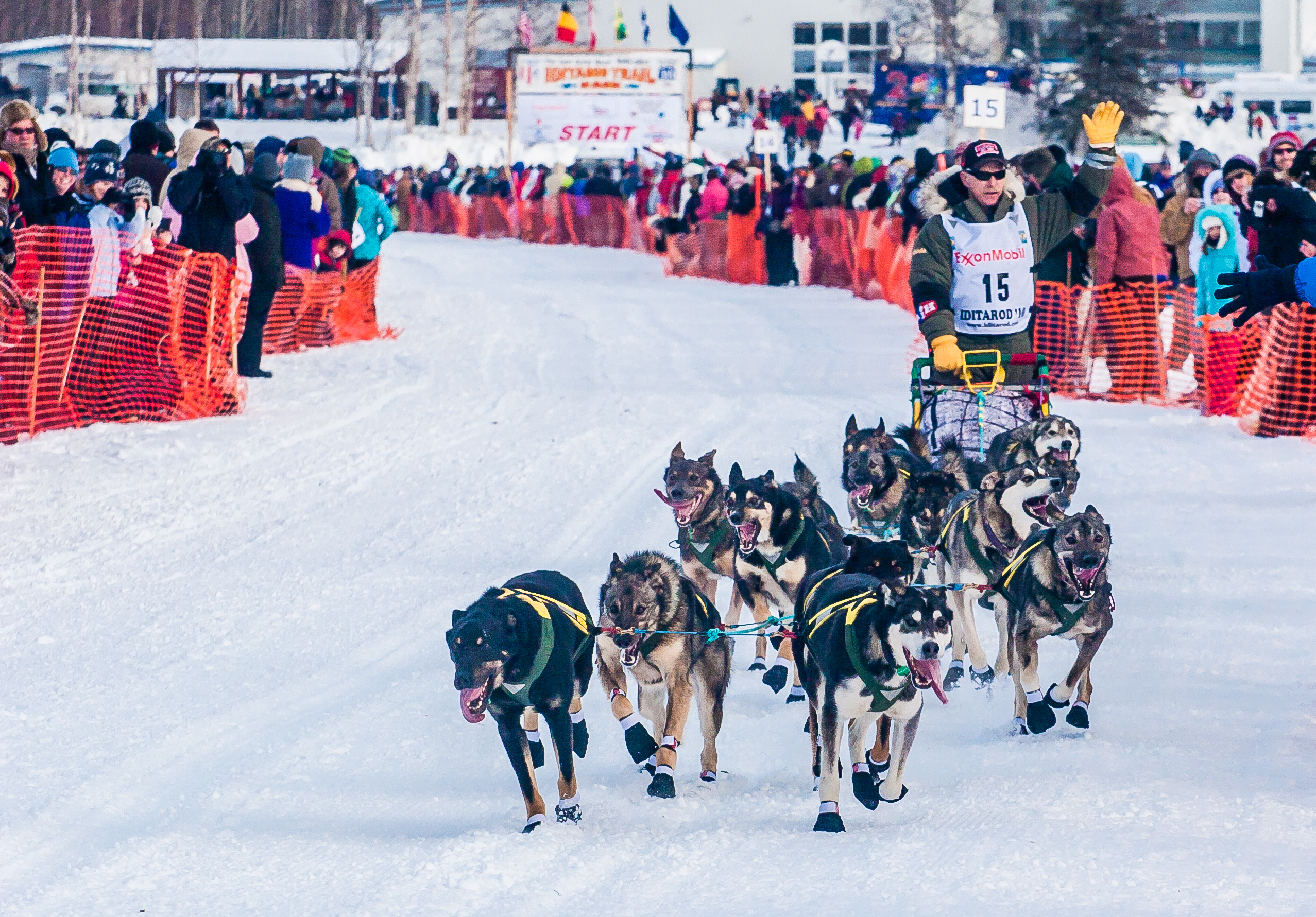Iditarod, << y DIHT uh rod, >> is the world’s most famous sled dog race. The annual race starts on the first Saturday of March in Anchorage, Alaska, and ends in Nome, Alaska. It crosses the Alaska and Kuskokwim mountain ranges, heading northwest across the state and then north along the Bering Sea coast to Nome. The race follows a northern route in even years and a southern route in odd-numbered years.

The Iditarod requires enormous endurance, both from the sled driver, known as the musher, and the dogs. The race covers about 1,100 miles (1,770 kilometers), much of the distance icy, snowy trails. The Iditarod typically takes about 10 to 17 days. Mushers and their dogs may train all year for the race. Both men and women compete.
At least 12 dogs and no more than 16 dogs must start the race. At least 5 dogs must finish. The dogs, normally Siberian or Alaskan huskies, are selected for speed, endurance, and courage. The sled is extremely light, but it must be strong enough to carry the weight of the musher, equipment and provisions for the race, and sick or exhausted dogs.
The current Iditarod format originated in 1973, developing from shorter sled dog races first held in 1967 and 1969. It is held on the Iditarod Trail, a dog sled mail route first used in 1910. The race also commemorates an emergency rescue mission by dog sled to get medical supplies to Nome during a diphtheria outbreak in 1925 (see Balto ).

